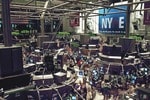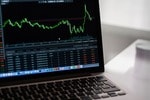
Why Did SoFi Stock Drop?
Fintech platform SoFi (NASDAQ:SOFI) has stumbled in recent days, selling…


| Company | Revenue Forecast | Earnings Forecast | Revenue Growth Forecast | Earnings Growth Forecast | Analyst Price Target Median |
|---|---|---|---|---|---|
|
OJIPF
Oji Holdings Corp.
|
-- | -- | -- | -- | -- |
|
NDEKY
Nitto Denko Corp.
|
-- | -- | -- | -- | -- |
|
SHECY
Shin-Etsu Chemical Co., Ltd.
|
-- | -- | -- | -- | -- |
|
SOMMY
Sumitomo Chemical Co., Ltd.
|
-- | -- | -- | -- | -- |
|
TYOBY
Toyobo Co., Ltd.
|
-- | -- | -- | -- | -- |
| Company | Price | Analyst Target | Market Cap | P/E Ratio | Dividend per Share | Dividend Yield | Price / LTM Sales |
|---|---|---|---|---|---|---|---|
|
OJIPF
Oji Holdings Corp.
|
$5.26 | -- | $4.8B | 23.36x | $0.12 | 3.81% | 0.40x |
|
NDEKY
Nitto Denko Corp.
|
$24.59 | -- | $16.8B | 20.00x | $0.19 | 0% | 2.52x |
|
SHECY
Shin-Etsu Chemical Co., Ltd.
|
$15.56 | -- | $125.6B | 17.96x | $0.18 | 0% | 3.58x |
|
SOMMY
Sumitomo Chemical Co., Ltd.
|
$14.91 | -- | $4.9B | 8.65x | $0.21 | 0% | 0.30x |
|
TYOBY
Toyobo Co., Ltd.
|
$6.85 | -- | $604.5M | 11.73x | $0.28 | 0% | 0.22x |
| Company | Total Debt / Total Capital | Beta | Debt to Equity | Quick Ratio |
|---|---|---|---|---|
|
OJIPF
Oji Holdings Corp.
|
47.58% | -0.080 | 130.69% | 0.62x |
|
NDEKY
Nitto Denko Corp.
|
0.26% | 0.695 | 0.12% | 2.43x |
|
SHECY
Shin-Etsu Chemical Co., Ltd.
|
5.46% | 0.802 | 1.24% | 4.24x |
|
SOMMY
Sumitomo Chemical Co., Ltd.
|
55.42% | 0.055 | 121.21% | 0.80x |
|
TYOBY
Toyobo Co., Ltd.
|
56.24% | 0.000 | 204.09% | 0.84x |
| Company | Gross Profit | Operating Income | Return on Invested Capital | Return on Common Equity | EBIT Margin | Free Cash Flow |
|---|---|---|---|---|---|---|
|
OJIPF
Oji Holdings Corp.
|
$566.6M | $88.3M | 1.65% | 3.03% | 2.85% | -- |
|
NDEKY
Nitto Denko Corp.
|
$710.7M | $369.5M | 12.03% | 12.12% | 20.38% | $256.2M |
|
SHECY
Shin-Etsu Chemical Co., Ltd.
|
$1.6B | $1.1B | 11.32% | 11.6% | 25.48% | $781.3M |
|
SOMMY
Sumitomo Chemical Co., Ltd.
|
$1.2B | $288.9M | 6.2% | 13.76% | 7.48% | $69.8M |
|
TYOBY
Toyobo Co., Ltd.
|
$173M | $42.2M | 1.97% | 4.17% | 6.16% | -- |
Nitto Denko Corp. has a net margin of 3.62% compared to Oji Holdings Corp.'s net margin of 14.08%. Oji Holdings Corp.'s return on equity of 3.03% beat Nitto Denko Corp.'s return on equity of 12.12%.
| Company | Gross Margin | Earnings Per Share | Invested Capital |
|---|---|---|---|
|
OJIPF
Oji Holdings Corp.
|
18.26% | $0.12 | $13.6B |
|
NDEKY
Nitto Denko Corp.
|
39.2% | $0.38 | $7.1B |
Oji Holdings Corp. has a consensus price target of --, signalling downside risk potential of --. On the other hand Nitto Denko Corp. has an analysts' consensus of -- which suggests that it could fall by --. Given that Oji Holdings Corp. has higher upside potential than Nitto Denko Corp., analysts believe Oji Holdings Corp. is more attractive than Nitto Denko Corp..
| Company | Buy Ratings | Hold Ratings | Sell Ratings |
|---|---|---|---|
|
OJIPF
Oji Holdings Corp.
|
0 | 0 | 0 |
|
NDEKY
Nitto Denko Corp.
|
0 | 0 | 0 |
Oji Holdings Corp. has a beta of -0.350, which suggesting that the stock is 134.961% less volatile than S&P 500. In comparison Nitto Denko Corp. has a beta of 0.899, suggesting its less volatile than the S&P 500 by 10.146%.
Oji Holdings Corp. has a quarterly dividend of $0.12 per share corresponding to a yield of 3.81%. Nitto Denko Corp. offers a yield of 0% to investors and pays a quarterly dividend of $0.19 per share. Oji Holdings Corp. pays 50.7% of its earnings as a dividend. Nitto Denko Corp. pays out 19.99% of its earnings as a dividend. Both of these payout ratios are sufficient to cover dividend payouts with earnings for the foreseeable future.
Oji Holdings Corp. quarterly revenues are $3.1B, which are larger than Nitto Denko Corp. quarterly revenues of $1.8B. Oji Holdings Corp.'s net income of $112.2M is lower than Nitto Denko Corp.'s net income of $255.2M. Notably, Oji Holdings Corp.'s price-to-earnings ratio is 23.36x while Nitto Denko Corp.'s PE ratio is 20.00x. Generally a lower price-to-earnings ratio signals a stock is trading at a lower multiple of earnings and is a better value. Another key metric is the price-to-sales ratio, which for Oji Holdings Corp. is 0.40x versus 2.52x for Nitto Denko Corp.. Usually stocks with elevated PS ratios are considered overvalued.
| Company | Price/Sales Ratio | Price/Earnings Ratio | Quarterly Revenue | Quarterly Net Income |
|---|---|---|---|---|
|
OJIPF
Oji Holdings Corp.
|
0.40x | 23.36x | $3.1B | $112.2M |
|
NDEKY
Nitto Denko Corp.
|
2.52x | 20.00x | $1.8B | $255.2M |
Shin-Etsu Chemical Co., Ltd. has a net margin of 3.62% compared to Oji Holdings Corp.'s net margin of 21.3%. Oji Holdings Corp.'s return on equity of 3.03% beat Shin-Etsu Chemical Co., Ltd.'s return on equity of 11.6%.
| Company | Gross Margin | Earnings Per Share | Invested Capital |
|---|---|---|---|
|
OJIPF
Oji Holdings Corp.
|
18.26% | $0.12 | $13.6B |
|
SHECY
Shin-Etsu Chemical Co., Ltd.
|
35.05% | $0.24 | $31.3B |
Oji Holdings Corp. has a consensus price target of --, signalling downside risk potential of --. On the other hand Shin-Etsu Chemical Co., Ltd. has an analysts' consensus of -- which suggests that it could fall by --. Given that Oji Holdings Corp. has higher upside potential than Shin-Etsu Chemical Co., Ltd., analysts believe Oji Holdings Corp. is more attractive than Shin-Etsu Chemical Co., Ltd..
| Company | Buy Ratings | Hold Ratings | Sell Ratings |
|---|---|---|---|
|
OJIPF
Oji Holdings Corp.
|
0 | 0 | 0 |
|
SHECY
Shin-Etsu Chemical Co., Ltd.
|
0 | 0 | 0 |
Oji Holdings Corp. has a beta of -0.350, which suggesting that the stock is 134.961% less volatile than S&P 500. In comparison Shin-Etsu Chemical Co., Ltd. has a beta of 1.380, suggesting its more volatile than the S&P 500 by 38.013%.
Oji Holdings Corp. has a quarterly dividend of $0.12 per share corresponding to a yield of 3.81%. Shin-Etsu Chemical Co., Ltd. offers a yield of 0% to investors and pays a quarterly dividend of $0.18 per share. Oji Holdings Corp. pays 50.7% of its earnings as a dividend. Shin-Etsu Chemical Co., Ltd. pays out 27.22% of its earnings as a dividend. Both of these payout ratios are sufficient to cover dividend payouts with earnings for the foreseeable future.
Oji Holdings Corp. quarterly revenues are $3.1B, which are smaller than Shin-Etsu Chemical Co., Ltd. quarterly revenues of $4.4B. Oji Holdings Corp.'s net income of $112.2M is lower than Shin-Etsu Chemical Co., Ltd.'s net income of $947.6M. Notably, Oji Holdings Corp.'s price-to-earnings ratio is 23.36x while Shin-Etsu Chemical Co., Ltd.'s PE ratio is 17.96x. Generally a lower price-to-earnings ratio signals a stock is trading at a lower multiple of earnings and is a better value. Another key metric is the price-to-sales ratio, which for Oji Holdings Corp. is 0.40x versus 3.58x for Shin-Etsu Chemical Co., Ltd.. Usually stocks with elevated PS ratios are considered overvalued.
| Company | Price/Sales Ratio | Price/Earnings Ratio | Quarterly Revenue | Quarterly Net Income |
|---|---|---|---|---|
|
OJIPF
Oji Holdings Corp.
|
0.40x | 23.36x | $3.1B | $112.2M |
|
SHECY
Shin-Etsu Chemical Co., Ltd.
|
3.58x | 17.96x | $4.4B | $947.6M |
Sumitomo Chemical Co., Ltd. has a net margin of 3.62% compared to Oji Holdings Corp.'s net margin of 15.29%. Oji Holdings Corp.'s return on equity of 3.03% beat Sumitomo Chemical Co., Ltd.'s return on equity of 13.76%.
| Company | Gross Margin | Earnings Per Share | Invested Capital |
|---|---|---|---|
|
OJIPF
Oji Holdings Corp.
|
18.26% | $0.12 | $13.6B |
|
SOMMY
Sumitomo Chemical Co., Ltd.
|
32.04% | $0.92 | $16.1B |
Oji Holdings Corp. has a consensus price target of --, signalling downside risk potential of --. On the other hand Sumitomo Chemical Co., Ltd. has an analysts' consensus of -- which suggests that it could fall by --. Given that Oji Holdings Corp. has higher upside potential than Sumitomo Chemical Co., Ltd., analysts believe Oji Holdings Corp. is more attractive than Sumitomo Chemical Co., Ltd..
| Company | Buy Ratings | Hold Ratings | Sell Ratings |
|---|---|---|---|
|
OJIPF
Oji Holdings Corp.
|
0 | 0 | 0 |
|
SOMMY
Sumitomo Chemical Co., Ltd.
|
0 | 0 | 0 |
Oji Holdings Corp. has a beta of -0.350, which suggesting that the stock is 134.961% less volatile than S&P 500. In comparison Sumitomo Chemical Co., Ltd. has a beta of 0.264, suggesting its less volatile than the S&P 500 by 73.639%.
Oji Holdings Corp. has a quarterly dividend of $0.12 per share corresponding to a yield of 3.81%. Sumitomo Chemical Co., Ltd. offers a yield of 0% to investors and pays a quarterly dividend of $0.21 per share. Oji Holdings Corp. pays 50.7% of its earnings as a dividend. Sumitomo Chemical Co., Ltd. pays out 27.15% of its earnings as a dividend. Both of these payout ratios are sufficient to cover dividend payouts with earnings for the foreseeable future.
Oji Holdings Corp. quarterly revenues are $3.1B, which are smaller than Sumitomo Chemical Co., Ltd. quarterly revenues of $3.9B. Oji Holdings Corp.'s net income of $112.2M is lower than Sumitomo Chemical Co., Ltd.'s net income of $590.3M. Notably, Oji Holdings Corp.'s price-to-earnings ratio is 23.36x while Sumitomo Chemical Co., Ltd.'s PE ratio is 8.65x. Generally a lower price-to-earnings ratio signals a stock is trading at a lower multiple of earnings and is a better value. Another key metric is the price-to-sales ratio, which for Oji Holdings Corp. is 0.40x versus 0.30x for Sumitomo Chemical Co., Ltd.. Usually stocks with elevated PS ratios are considered overvalued.
| Company | Price/Sales Ratio | Price/Earnings Ratio | Quarterly Revenue | Quarterly Net Income |
|---|---|---|---|---|
|
OJIPF
Oji Holdings Corp.
|
0.40x | 23.36x | $3.1B | $112.2M |
|
SOMMY
Sumitomo Chemical Co., Ltd.
|
0.30x | 8.65x | $3.9B | $590.3M |
Toyobo Co., Ltd. has a net margin of 3.62% compared to Oji Holdings Corp.'s net margin of 4.58%. Oji Holdings Corp.'s return on equity of 3.03% beat Toyobo Co., Ltd.'s return on equity of 4.17%.
| Company | Gross Margin | Earnings Per Share | Invested Capital |
|---|---|---|---|
|
OJIPF
Oji Holdings Corp.
|
18.26% | $0.12 | $13.6B |
|
TYOBY
Toyobo Co., Ltd.
|
25.23% | $0.32 | $3.3B |
Oji Holdings Corp. has a consensus price target of --, signalling downside risk potential of --. On the other hand Toyobo Co., Ltd. has an analysts' consensus of -- which suggests that it could fall by --. Given that Oji Holdings Corp. has higher upside potential than Toyobo Co., Ltd., analysts believe Oji Holdings Corp. is more attractive than Toyobo Co., Ltd..
| Company | Buy Ratings | Hold Ratings | Sell Ratings |
|---|---|---|---|
|
OJIPF
Oji Holdings Corp.
|
0 | 0 | 0 |
|
TYOBY
Toyobo Co., Ltd.
|
0 | 0 | 0 |
Oji Holdings Corp. has a beta of -0.350, which suggesting that the stock is 134.961% less volatile than S&P 500. In comparison Toyobo Co., Ltd. has a beta of -0.028, suggesting its less volatile than the S&P 500 by 102.768%.
Oji Holdings Corp. has a quarterly dividend of $0.12 per share corresponding to a yield of 3.81%. Toyobo Co., Ltd. offers a yield of 0% to investors and pays a quarterly dividend of $0.28 per share. Oji Holdings Corp. pays 50.7% of its earnings as a dividend. Toyobo Co., Ltd. pays out 135.1% of its earnings as a dividend. Oji Holdings Corp.'s payout ratio is sufficient to cover dividend payouts with earnings for the foreseeable future, but Toyobo Co., Ltd.'s is not.
Oji Holdings Corp. quarterly revenues are $3.1B, which are larger than Toyobo Co., Ltd. quarterly revenues of $685.6M. Oji Holdings Corp.'s net income of $112.2M is higher than Toyobo Co., Ltd.'s net income of $31.4M. Notably, Oji Holdings Corp.'s price-to-earnings ratio is 23.36x while Toyobo Co., Ltd.'s PE ratio is 11.73x. Generally a lower price-to-earnings ratio signals a stock is trading at a lower multiple of earnings and is a better value. Another key metric is the price-to-sales ratio, which for Oji Holdings Corp. is 0.40x versus 0.22x for Toyobo Co., Ltd.. Usually stocks with elevated PS ratios are considered overvalued.
| Company | Price/Sales Ratio | Price/Earnings Ratio | Quarterly Revenue | Quarterly Net Income |
|---|---|---|---|---|
|
OJIPF
Oji Holdings Corp.
|
0.40x | 23.36x | $3.1B | $112.2M |
|
TYOBY
Toyobo Co., Ltd.
|
0.22x | 11.73x | $685.6M | $31.4M |
Signup to receive the latest stock alerts


Fintech platform SoFi (NASDAQ:SOFI) has stumbled in recent days, selling…

Recently, online brokerage Robinhood (NASDAQ:HOOD) has been focused on introducing…

With the market starting to look skittish on pure-play AI…
Market Cap: $4.4T
P/E Ratio: 62x
Market Cap: $4.1T
P/E Ratio: 37x
Market Cap: $3.9T
P/E Ratio: 40x
SMX (Security Matters) Plc [SMX] is down 59.64% over the past day.
Kymera Therapeutics, Inc. [KYMR] is up 41.67% over the past day.
Praxis Precision Medicines, Inc. [PRAX] is up 9.18% over the past day.

